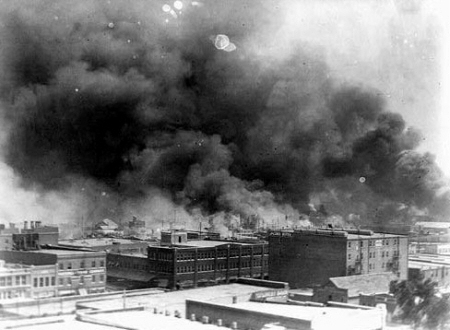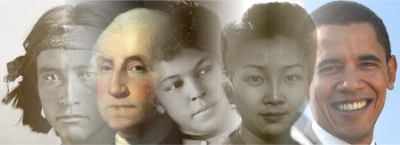Sadly, African Americans in the West often suffered the same kinds of violence and discrimination that was faced throughout the rest of the United States.
In one of the worst cases on record, early on June 1, 1921, whites set fire to and destroyed 35 city blocks of Tulsa, Oklahoma--the entire black section of the town. This neighborhood was a thrivng and prosperous community, even called "Black Wall Street." In response to the riot, the governor called in the National Guard. All the black residents of Tulsa, over 6,000 people, were arrested and interned at the Covnetional Hall at the local fairgrounds. Some of these indivuduals were not released for eight days.
The official death toll is listed as 39, eleven white and 28 black, however historians now believe the death toll was close to 300, if not higher.
In 2001 a report was issued by the Oklahoma Commission
to Study the Tulsa Race Riot of 1921. Click here for a pdf of that report.
|

Visual Records from the NAACP, Library of Congress.
|

